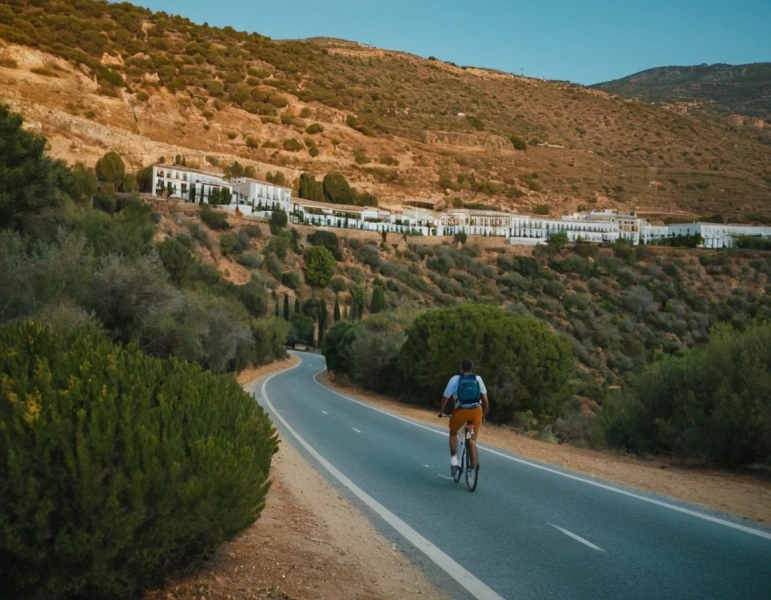Educa UNIVERSITY|EDUCATION
Education in Andalusia: The Story of Rubén Águila and his experience in a system in constant evolution.
Related Masters
Education in Andalusia: The Story of Rubén Águila and his experience in a system in constant evolution.
Hello, I'm Rubén Águila, and I want to talk to you about education in Andalusia from pure and hard experience. Because, yes, I have spent my whole life dealing with the Andalusian education system, both as a student, a parent and as someone who observes in detail how it has changed (or not so much). Ready for a trip through my memories and analysis? Let's go there!
The education system in Andalusia
The first thing you need to know is that education in Andalusia is quite varied. It is not the same to study in a big city like Seville or Malaga than in a small village in the Alpujarras. Although in theory all schools should follow the same standards, the reality changes depending on where you are. And this... I have experienced it firsthand.

When I went to school back in the 80s, things were quite different. There were no tablets or computers and, well, the teachers were a bit.... "old-fashioned". But what has not changed much is that we have always fought for an equitable and accessible education for all.
Evolution and challenges
I cannot tell the story of Andalusian education without mentioning the great advances it has had. Today, we have initiatives such as the PROA Andalucía, which is a program that helps students who need it most so that they do not drop out of school. And this is important, because just a few decades ago, the school dropout rate was extremely high. Today, thanks to programs like this one, it has been notably reduced, but there is still a long way to go.
At a general level, the Andalusian education system serves almost 1.8 million students in more than 7,000 public and private centers. What is most striking is how, despite the drop in the birth rate, resources have been reinforced and the number of teachers has increased. I know, it is something that seems contradictory, but this effort of the Board has been key to improving educational care (for the record, I have also experienced this as a parent).
Innovation in Andalusian classrooms
One of the things that has surprised me most in recent years is how technology has entered the classroom. We are no longer talking about blackboards and chalk (although they still survive in some corners), but about digitization projects that make students face a much more interactive and modern educational environment. The use of technology has revolutionized teaching, making it easier for students to acquire skills that are more in tune with the real world.
But is everything rosy? No, of course not. There are centers that are still lagging behind and do not have the necessary resources to implement these innovations effectively. And this is due, in part, to the unequal distribution of funds and resources among the different zones. Unfortunately, I have seen schools with overcrowded classrooms and lack of staff in rural areas, while in city centers things are a little easier.
A system that is committed to diversity and inclusion
Another aspect that I do not want to overlook is how education in Andalusia has been committed to inclusion and diversity. There are specific programs such as "Escuela Espacio de Paz" or "Convivencia Escolar", which seek to ensure that all children, regardless of their origin or abilities, have a safe place to learn and develop. These programs were not even in our dreams when I was a child, but today they are part of the Andalusian educational reality.
Through initiatives like these, students learn not only about books, but also about respect for diversity, peaceful coexistence and the importance of human relationships. This, without a doubt, has been a tremendously positive change that improves educational quality, and as a parent, I tell you it is something I am deeply glad.
VET, an option with a future
I cannot finish without mentioning Vocational Training (FP). For a long time, it has been undervalued, but today it is one of the most powerful educational options that Andalusia has. It has expanded the supply of places and training cycles, and I assure you that VET is the ideal path for many young people looking for a quick and solid job placement. And I'm not saying it myself, the figures say it: more than 47,000 new VET places have been created to meet the demand, and this does not stop growing.
My advice? If you have children, consider VET as a serious option. Today, companies are looking for qualified professionals, and VET is designing its programs to directly match the needs of the labor market.
What still needs improvement
Okay, we've talked about the progress, but it's also fair to mention the challenges that still need to be overcome. Not everything is perfect, and there are certainly outstanding issues that I would like to see improved. Among them, the distribution of resources remains a sensitive issue. There are rural schools that do not have the same funds as those in the big cities, and this generates a gap in educational quality that should not be allowed.
There has also been much mention in recent times of the need to update curricula and adapt them better to the needs of the times. Although there are many efforts underway, such as the Plan Innova or the Environmental Education programs, the rigidity of some curricula means that, at times, students do not really feel prepared for the future.
The Environmental Education program, the some curricula are so rigid that students do not feel they are really prepared for the future.
Faculties
Trainings
The faculties embrace diverse academic disciplines and fields of study, opening doors to new perspectives and exploring different spheres of wisdom in a constantly evolving world.














